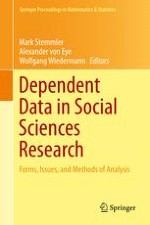2015 | OriginalPaper | Chapter
Can Psychometric Measurement Models Inform Behavior Genetic Models? A Bayesian Model Comparison Approach
Authors : Ting Wang, Phillip K. Wood, Andrew C. Heath
Published in: Dependent Data in Social Sciences Research
Publisher: Springer International Publishing
Activate our intelligent search to find suitable subject content or patents.
Select sections of text to find matching patents with Artificial Intelligence. powered by
Select sections of text to find additional relevant content using AI-assisted search. powered by
